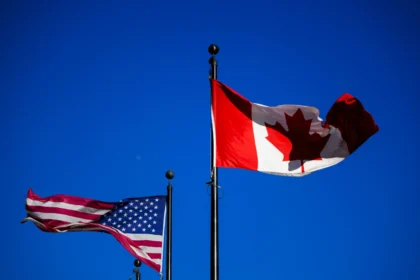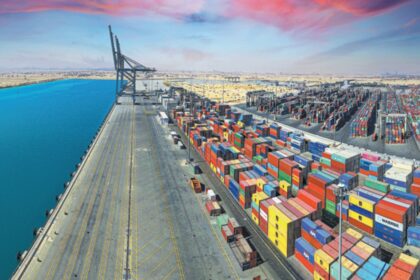As the last statue of Bashir Al-Assad fell in his home region of Latakia, innumerable Syrians cried tears of joy, celebrating the overthrow of a horrific dictator who presided over a system of abject terror in the form of death camps like Sednaya and the end of a brutal 13-year civil war costing hundreds of thousands of lives between Assadist loyalists and numerous rebel factions. Yet, as Syrians from around the world return to their homeland and as the new transitional government sets about rebuilding a ruined nation, several geopolitical and domestic challenges remain for Syrians and their new rulers.
When the Military Operations Command led by Hayat Tahrir Al Shams (HTS) launched its offensive against government forces in Aleppo governorate, no one in the region expected them to take over Aleppo, the second largest city in Syria, let alone the country, in less than 2 weeks.

Yet, the former Al-Qaeda affiliate not only managed to take over the Sunni-majority cities and governorates, traditionally seen as apathetic to the Assad regime, but even minority strongholds in Hama, Homs, and Damascus and, most surprisingly, took the Alawite homeland—who supported the regime most enthusiastically—of Latakia and Tartus. HTS is thus the second Islamist insurgent group to take over the country after the Afghan Taliban. Still, unlike the latter, it took on a decidedly more moderate approach, with the Emir of HTS, Ahmad Al Shaara, better known by his nom de guerre Joulani, personally distancing the group from not only the Afghan Taliban in terms of approach, but for years in Idlib, the last rebel stronghold, launched reforms moderating the group and breaking its former affiliation with Al-Qaeda. Indeed, many moderate and democratically inclined Syrians embraced the new transitional government, seeing it as the best hope for a New Syria.
Despite the rosy optimism of many, however, the sudden removal of Bashar al-Assad’s regime has destabilized the Syrian status quo for several years. HTS now finds itself as statesmen rather than embattled rebel fighters and seeks to reunite a finally fractured nation after years of conflict. Given the numerous regional and international actors involved in the country, it is not easy to accomplish.
The biggest issue facing HTS currently in its pursuit of Syrian political unity is the Kurdish question. For years, Syrian Kurds, through the Syrian Democratic Force (SDF), controlled South and East Syria, having the support of the United States and its military, an alliance cemented during the fight against the Islamic State back in 2015-17.
 The Kurds desire political and cultural autonomy, having been discriminated against by the Arab-centric regimes of Damascus. Thus, the civil war allowed them to rule their own lands. Yet, this drew the ire of neighboring Turkey, who saw the SDF as essentially a front group of the Kurdish Workers Party (or PKK in Kurdish), a terrorist organization that waged a bloody insurgency against the Turkish state. Turkish authorities, as a result, view any form of autonomy under the SDF as a security threat and have launched numerous invasions and operations against the Kurds in Syria, occupying land in Afrin and the north along with their Syrian proxy, the Syrian National Army (SNA). Indeed, at the time of this writing, SNA forces have launched an operation against the SDF backed by Turkey.
The Kurds desire political and cultural autonomy, having been discriminated against by the Arab-centric regimes of Damascus. Thus, the civil war allowed them to rule their own lands. Yet, this drew the ire of neighboring Turkey, who saw the SDF as essentially a front group of the Kurdish Workers Party (or PKK in Kurdish), a terrorist organization that waged a bloody insurgency against the Turkish state. Turkish authorities, as a result, view any form of autonomy under the SDF as a security threat and have launched numerous invasions and operations against the Kurds in Syria, occupying land in Afrin and the north along with their Syrian proxy, the Syrian National Army (SNA). Indeed, at the time of this writing, SNA forces have launched an operation against the SDF backed by Turkey.
For HTS, this presents a nasty dilemma; the SDF controls the Syrian oilfields and has support from the United States and the broader Kurdish community, and unlike Assadist forces, they are well motivated. While Turkey is an essential ally, Turkish advisors built up HTS’s operational capacities while the Turkish state backed the Syrian revolution and rebels against Assad. Further, SDF demands of political autonomy and being allowed to maintain a separate section in any new Syrian military are unacceptable for the transitional government.

It is not only the Kurdish question that has invited foreign intervention. With the Syrian Arab Army of Bashar Al-Assad collapsing, the Israeli Air Force saw this as an opportunity to permanently cripple Syria’s conventional capabilities, targeting weapons depots, Air defense systems, and missile stocks. All the while, the IDF’s ground forces occupied territory in Daraa and Quneitra Governorates, establishing a buffer zone. The leader of HTS, Al-Joulani, criticized Israeli actions but perhaps wisely stated that Syria is not in a position to enter a new conflict.
Regional concerns remain about what direction Syria will take under the Islamist HTS. While they have promised elections, the exact timeline is unclear, and numerous Syrians are worried if HTS will move towards a more exclusivist Sunni religious state, a worrying development given the social reality of Syria, where over 20% of the population is non-Sunni while a large chunk of Sunni Syrians support a secular state. Reconstruction of Syria is closely linked with the removal of sanctions by the European Union and the US, and economic investment might not come in by either the Gulf countries like the UAE and KSA and others if HTS doesn’t contain the foreign jihadists under its tutelage, several of whom it has given positions in its new interim military.

Finally, questions remain about the role of Iran. After having backed the Bashar Al-Assad regime with billions of dollars in aid, tons of military equipment, and thousands of fighters, Iran lost decades of investments in the blink of an eye, and its Shia crescent now stands broken. Syria was an essential supply route to Hezbollah, and with the rebels in power, that has ceased. If the new rulers don’t balance ties with Iran and manage concerns with the Shia-Aligned Alawite community, it is very much possible that Iran will start funding the nascent pro-Assad insurgency and the SDF against the new rulers in Damascus.
How the transitional government deals with these challenges will decide if Syria is on the cusp of peace or if it is just another phase in the long Syrian winter.
















